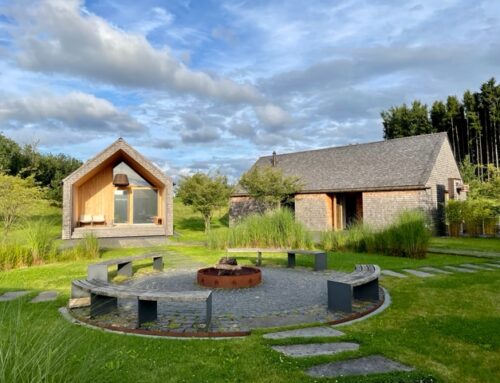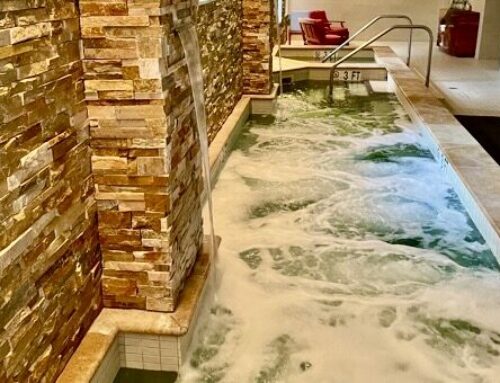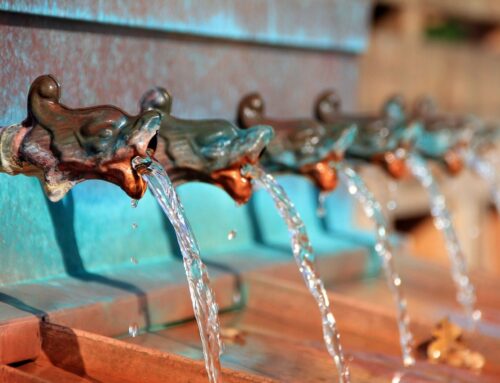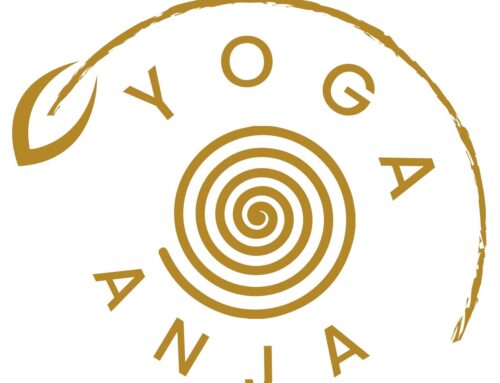What is tangible evidence and why is it needed in a spa?
When talking about the 7P’s in Spa Marketing, we agreed upon ‘Physical Facilities’ being one of the important additional P’s within the Marketing Mix.
Physical Facilities can also be translated to “Physical or Tangible Evidence”.
It describes the actual service space, or the landscape in which your spa services are being delivered.
And this is of course the space in which company and customer interact.
It includes tangible commodities such as equipment and supplies (towels, dishes, decoration, tools etc) that facilitate the actual performance of the service and communication about the service.
But what does tangible evidence actually do in your Spa?
Wellness services are intangible and consumers cannot touch, try, feel, smell or taste services prior to purchase.
When buying a new computer or cooking pot, we can usually gather information about the product, we find hard facts, measure sizes and performance, we can see 3-D-pictures, try samples, read reviews of other consumers, compare competitive product features etc. on which we can make our purchasing decision.
Making the outcome of the purchase pretty predictable.
This is much more complicated with spa & wellness services. How can the spa guest know about the outcome of a facial treatment prior to purchase? How does she know about the effect of a cosmetic product on her skin? How can she tell ahead if the touch of the beautician is pleasant?

www.pixabay.com
Do your “Physical Facilities” provide the right cues to your spa guests?
Tangible evidence are cues to our spa guest.
Those cues help her to evaluate the spa service prior to purchase.
They are divided in different areas, such as:
Ambience
ambience are all cues that adhere to the 5 human senses touch, smell, feel, taste, sight.
These elements play a role in how – whether consciously or unconsciously – the spa guests makes her spa experience. The ambience has to be precisely in line with the services offered and the target market they are addressing. The ambience triggers moods, such as longing, attraction and desire.
Layout
refers to the physical or spacial layout and the related functionality of the service landscape. The layout can determine how well the physical facility is suited in general to fulfil the target’s needs.
For example one main need of a spa’s target group may be tranquility, yet poor insulation of windows, doors, walls etc. is ill suited to fulfil this very need. Or customers are looking for convenient parking, yet the location of the carpark forces guests to cross a busy main road etc.
When talking about physical facilities we always want to distinguish the internal and external environment.
The external facility environment looks into exterior design, the surrounding environment, accessibility, business location, parking, exterior signage etc.

The internal spa environment includes colours (i.e. warm or cold colours) used in the interior design, interior signage, space in size, layout, air quality, temperature, hygiene, as much as quality, look, and functionality of furniture and equipment etc.
Signs (in both internal and external environment) do not only provide guidance for better orientation (for example signage in a lift telling the guest that the pool is on the ground floor and the relaxation room is located on the first floor), but also orientation to the guest in terms of “how does this work” and “how am I to act”. Remember, the spa guest or so called ‘external factor’ is always part of the production of the service, playing a major role himself in the successful outcome of the service for himself and other guests. A great example is the Sauna etiquette: do all sauna visitors adhere to sauna rules and if not, to what extent do they disturb other visitors or jeopardise the benefits of the heat experience?

Corporate Identity
Corporate Identity stands for the overall image of the spa, how stakeholders (partners, employees, customers, suppliers etc) see the business. This image of course has to go in line and support the overall business strategy and objectives of the business, typically manifested by branding or trademarks. In general, we look at 3 parts in CI:
The corporate design including logos, uniforms, colours, fonts etc.

Uniforms not only identify staff, but also represent the groups values, knowledge and structure. Well dressed staff is perceived as more intelligent, better workers, more interactive.
Corporate communication, such as advertising, PR, information, customer oriented language, style and culture, webpage, brochure, stationary, business cards.
And corporate behaviour including internal values, norms, corporate culture, internal language, SOPs.
Tangible evidence help spa guests to trust the service business
All these attributes of physical evidence as described above help spa guests to trust the service business. Physical evidence is the quality cue to the guest, which aids him in reducing a perceived risk. But it not only reduces the perceived risk prior to purchase, it also reduces the cognitive dissonance after the purchase, hence influencing the perceived value. So we can say, that they impact the spa guest’s initial purchasing decision, her level of satisfaction and a decision to repurchase the service in the future.

Was this article helpful to you? Do you have questions about aspects of physical evidence in your spa? Please let me know, I am happy to provide solutions for you!
Stay fresh with latest content updates in your inbox!







